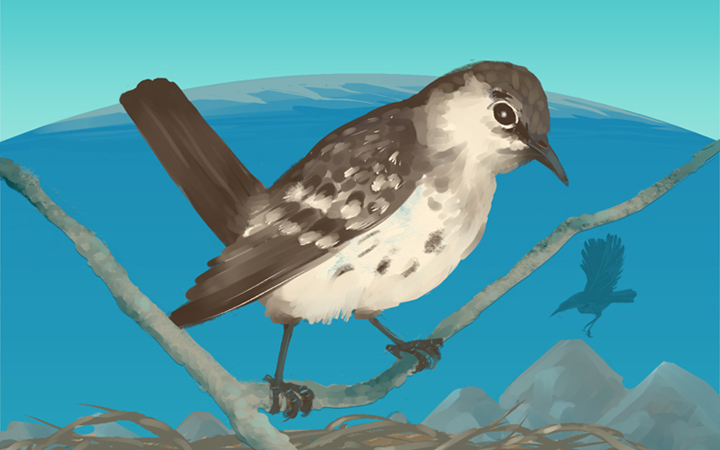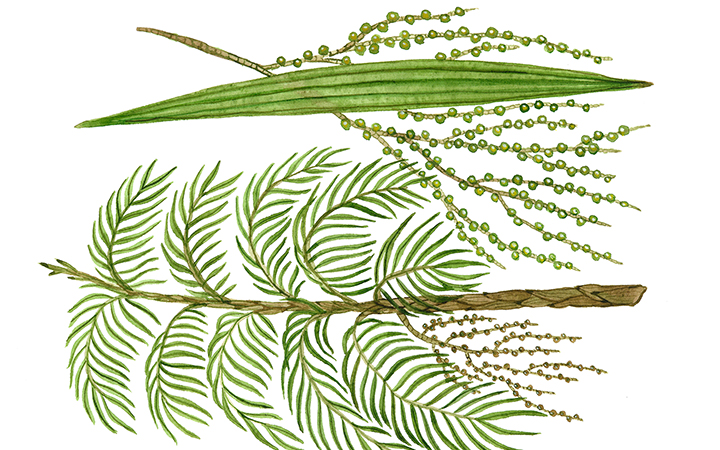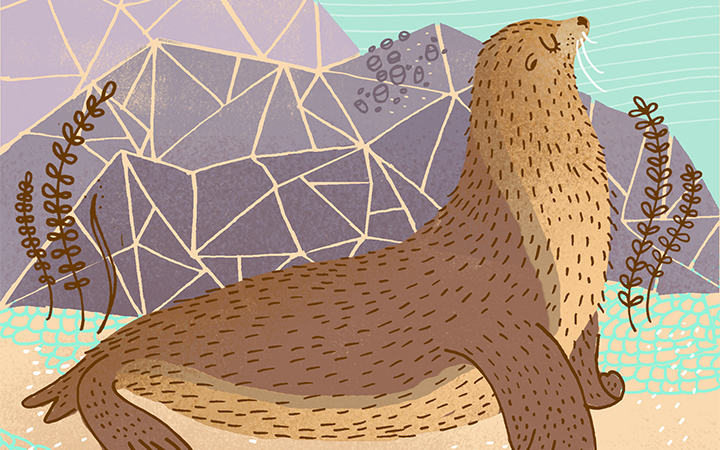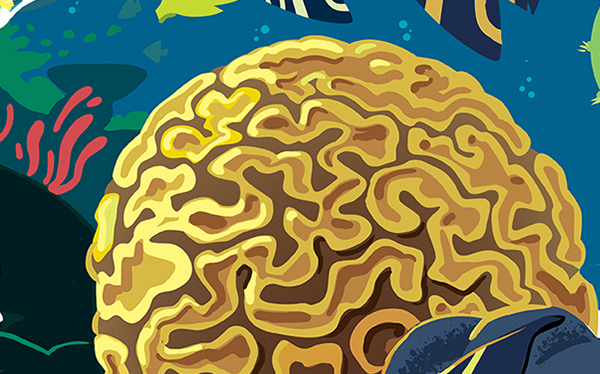Voyage of the Beagle Darwin Deck
2016 – (See Cards | Deck Info | Download cards : board : rules | Purchase Box Set : Cards Only)…
This is a deck made with research help from Karen James and includes commissioned art of a variety of organisms that Darwin observed or collected whilst on the H.M.S. Beagle. This deck will include 40 new cards and also a small game board that depicts a map of the voyage route. Note that the different card border colours are representative of different legs of the journey.

Floreana Mockingbird
Mimus trifasciatus


3 POINTS
Play: The Floreana Mockingbird has a FLIGHT of 2.
Fact: The Floreana Mockingbird is critically endangered and is on the brink of extinction.

Geonoma schottiana
Arecaceae geonoma schottiana


2 POINTS
FACT: Specimens of this plant were collected by Darwin at Bahia (Salvador) in March 1832.

Galapagos sea lion
Zalophus wollebaeki



8 POINTS
Play: This sea lion has a MOVE of 2.
Fact: Their loud bark, playful nature, and graceful agility in water make them the “welcoming party” of the Galapagos Islands.

Aeronaut Spider
Parasteatoda tepidariorum


6 POINTS
Play: These spiders have a FLIGHT of 2.
“How inexplicable is the cause which induces these small insects, as it now appears in both hemispheres, to undertake their aerial excursions.” ~Darwin (Oct 31, 1832)

Coral
Anthozoa class



3 POINTS
Play: Anthozoa is a suspension feeder and must be played adjacent to a 1 PLANKTON species.
Fact: Darwin’s The Structure and Distribution of Coral Reefs, Being the first part of the geology of the voyage of the Beagle, under the command of Capt. Fitzroy, R.N. during the years 1832 to 1836, was published in 1842.

Clouded Yellow
Colias genus



3 POINTS
Play: Clouded Yellows have a FLIGHT of 2, and need to feed off a flowering PLANTAE species.
Fact: This genus occurs throughout the Northern hemisphere, and is also found in South America, Africa, China and India.